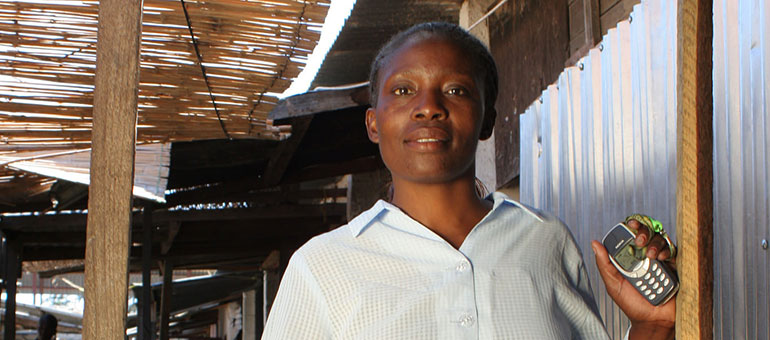A new report on the multiple causes of malnutrition in 14 countries will support programmes to provide health, nutrition and agricultural messages to millions of people through their cellphones.
The Summary report: 14-Country Nutrition Landscape Analyses published by the Global Alliance for Improved Nutrition (GAIN) and the GSMA Foundation is a comprehensive mapping of the basic and immediate causes of malnutrition – inadequate dietary intake and disease as well as the underlying causes of malnutrition – food and nutrition security, care and feeding practices, health, education, healthy environment including water and sanitation.
As part of a global consortium of partners, GAIN is working with the GSMA Foundation to develop nutrition-sensitive content for mobile phone services that provide mothers and farmers with health, nutrition and agricultural information. The GSMA mNutrition Initiative aims to reach at least 3 million people in eight countries in Africa (Nigeria, Ghana, Malawi, Mozambique, Tanzania, Kenya, Uganda, Zambia) and four countries in South Asia (Pakistan, Sri Lanka, Bangladesh and Myanmar) through embedding content in mHealth and mAgri services.
The analyses helped guide the development of nutrition-related content for mobile services in these countries. GSMA complemented this with an analysis of the mobile phone sector for each country. Findings from the 14 country landscape analyses demonstrate the importance of conducting an initial analysis of the nutrition situation within a country before designing interventions as the immediate and underlying causes of malnutrition vary by country and geographic location within the country.
The first of its kind, each landscape report as well as the summary report gives a comprehensive overview of all available information on the nutrition situation in the targeted countries, in order to inform the development of appropriate mHealth and mAgri content for each country context. These are key resource documents which provide the foundation for stakeholders within the mNutrition project and beyond to select appropriate interventions, and messages of relevance, to generate demand amongst different user segment groups to utilize and benefit from these life-improving services.

Young woman with mobile phone while at the market, Zambia. © GAIN
The report finds that despite many similarities in terms of levels of prevalence of malnutrition (stunting, underweight, wasting and micronutrient deficiencies) there are great variances between and within countries. This emphasizes the need to understand the country context well in designing projects that address malnutrition.
The first wave of mHealth services generated under GSMA’s mNutrition initiative have gone live in Ghana, Nigeria, Tanzania and Malawi. The landscape reports played a pivotal role in helping stakeholders in each country to identify the priority messages for different target audiences, in the most appropriate languages and using the most user-friendly formats, (e.g. use of SMS texts, or voice messages for illiterate and semi-literate parts of the population). These are amongst some of the technical nuances that local content providers and mobile operators need to consider for maximizing the reach of each message.
Last week GSMA host their annual African Mobile 360 Series in Dar es Salaam, Tanzania, bringing together mobile phone operators, government officials, Information and Communication Technologies (ICT), finance, NGO and media leaders across Sub-Saharan Africa and beyond to discuss innovations in mobile services for digital inclusion and evaluate how to extend access to mobile phone usage across the region. The idea behind the Mobile 360 series is to provide a specific focus on regional development issues and current industry topics which this year will include designing mHealth services for vulnerable populations and using mobile technology to transform the lives of women.